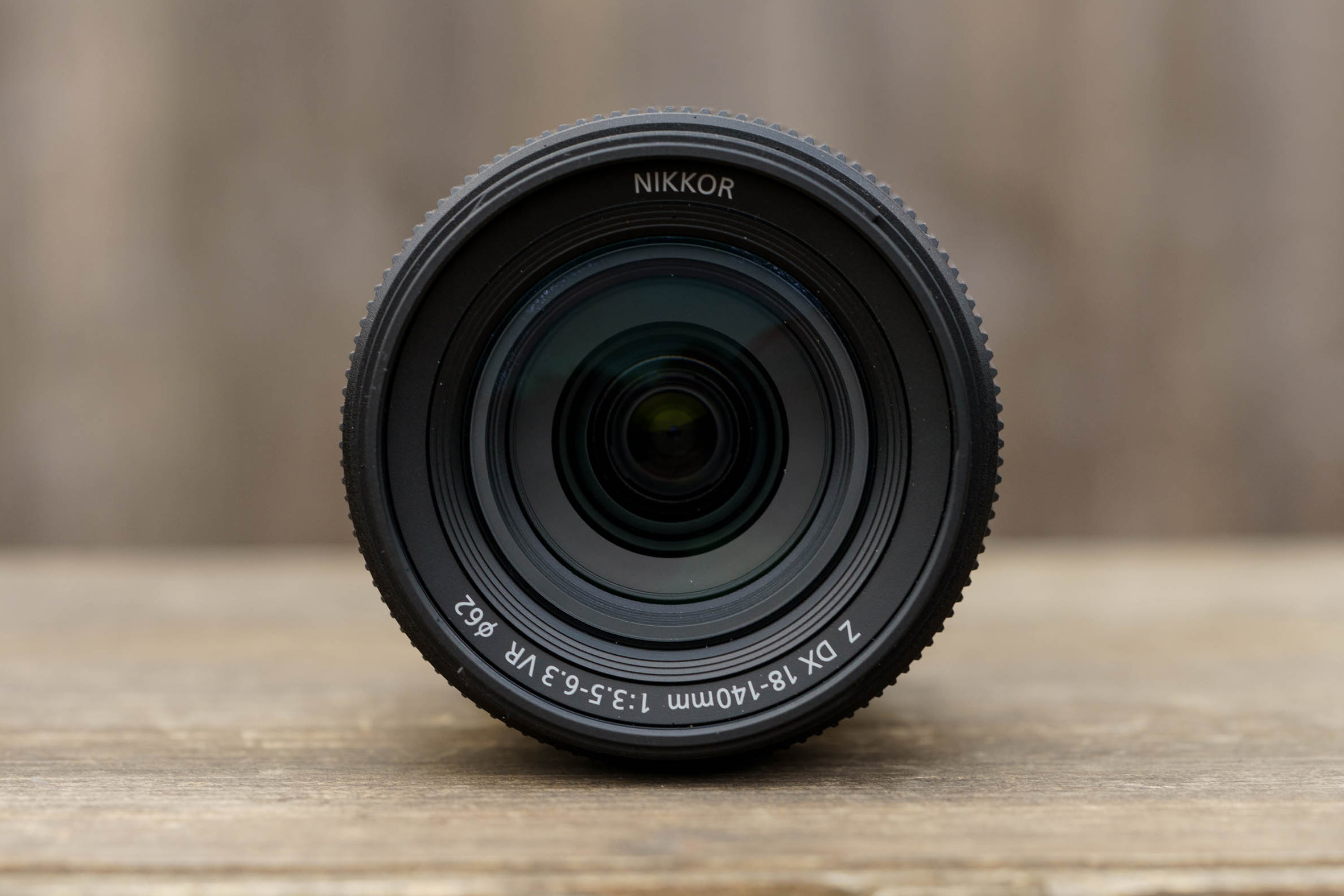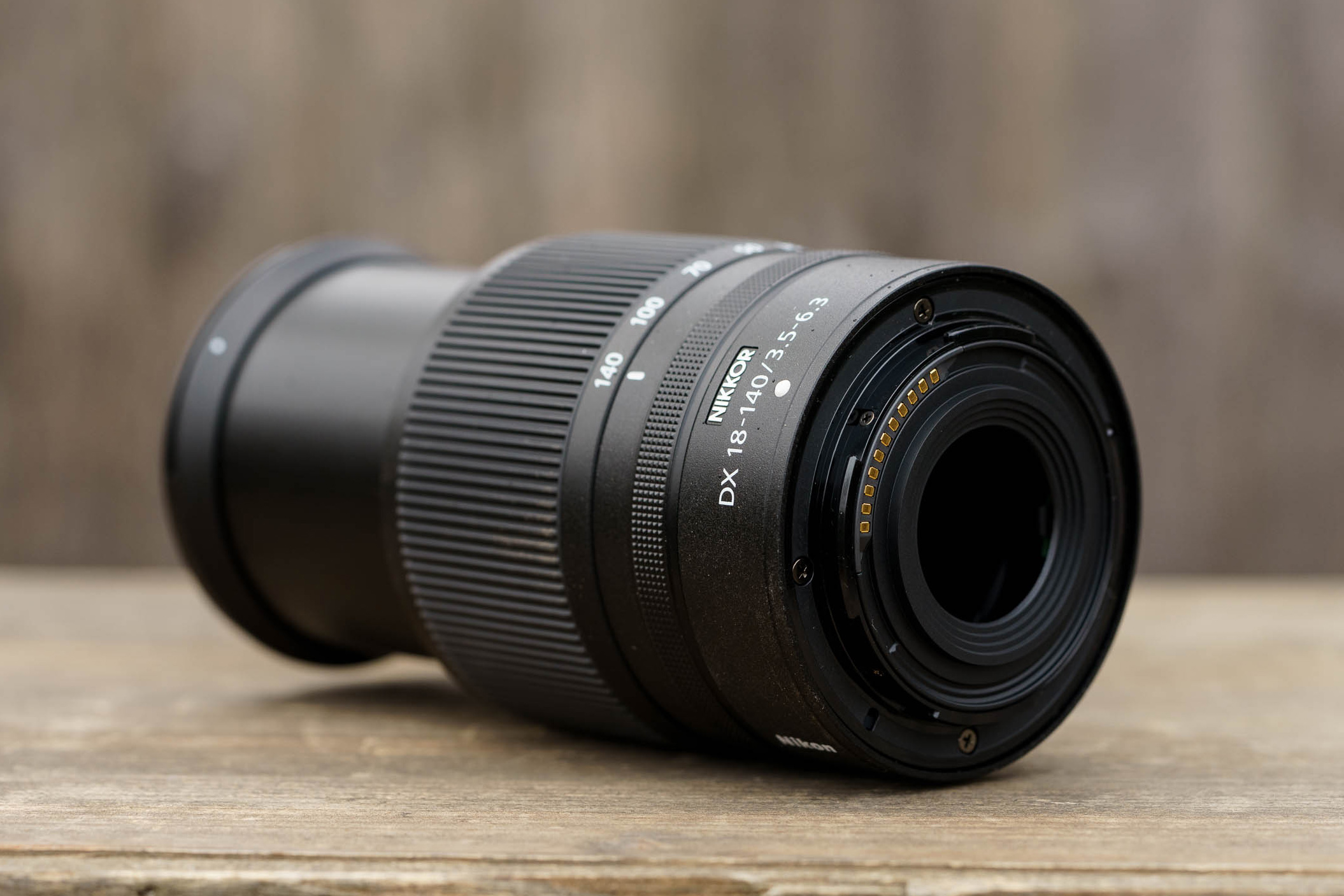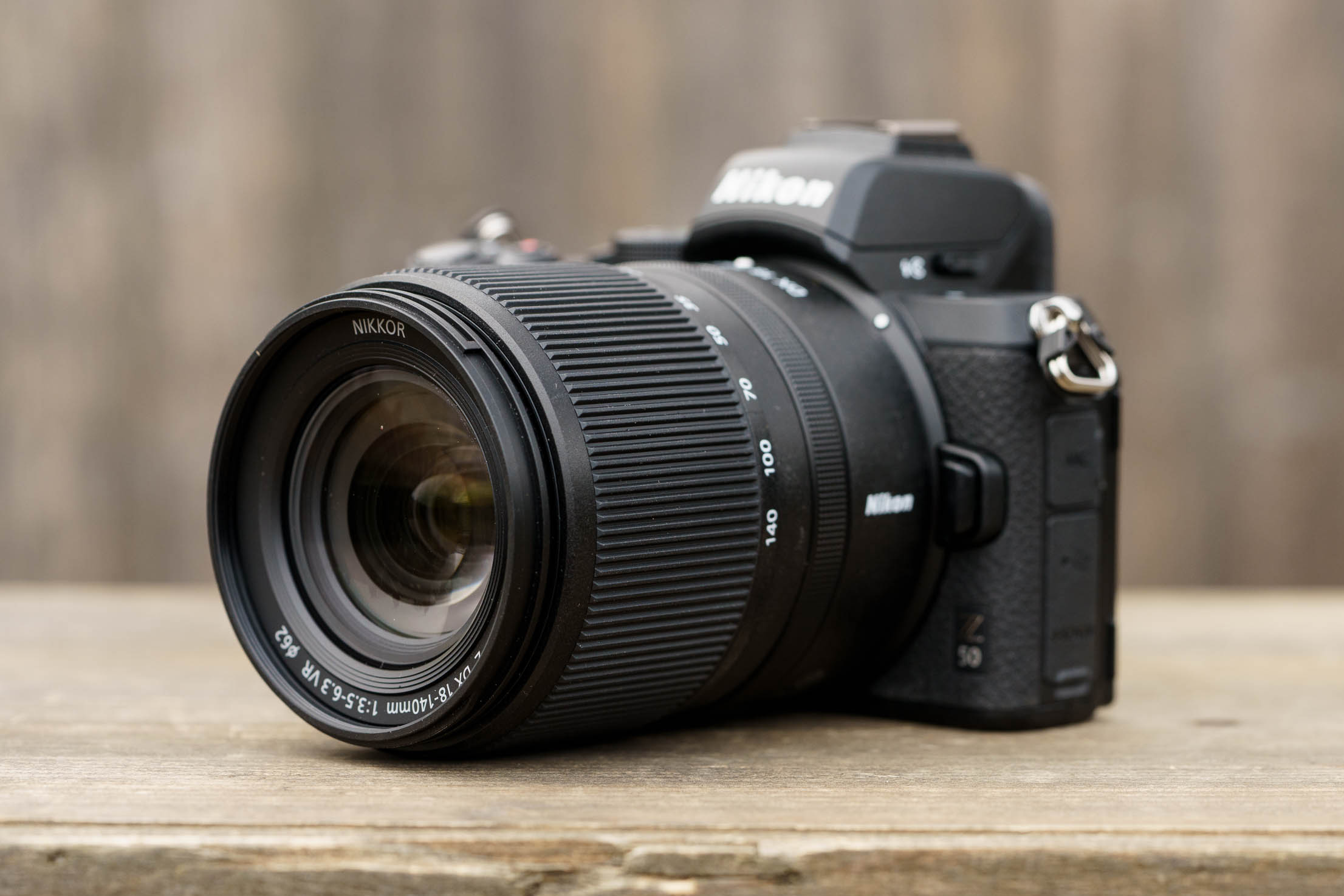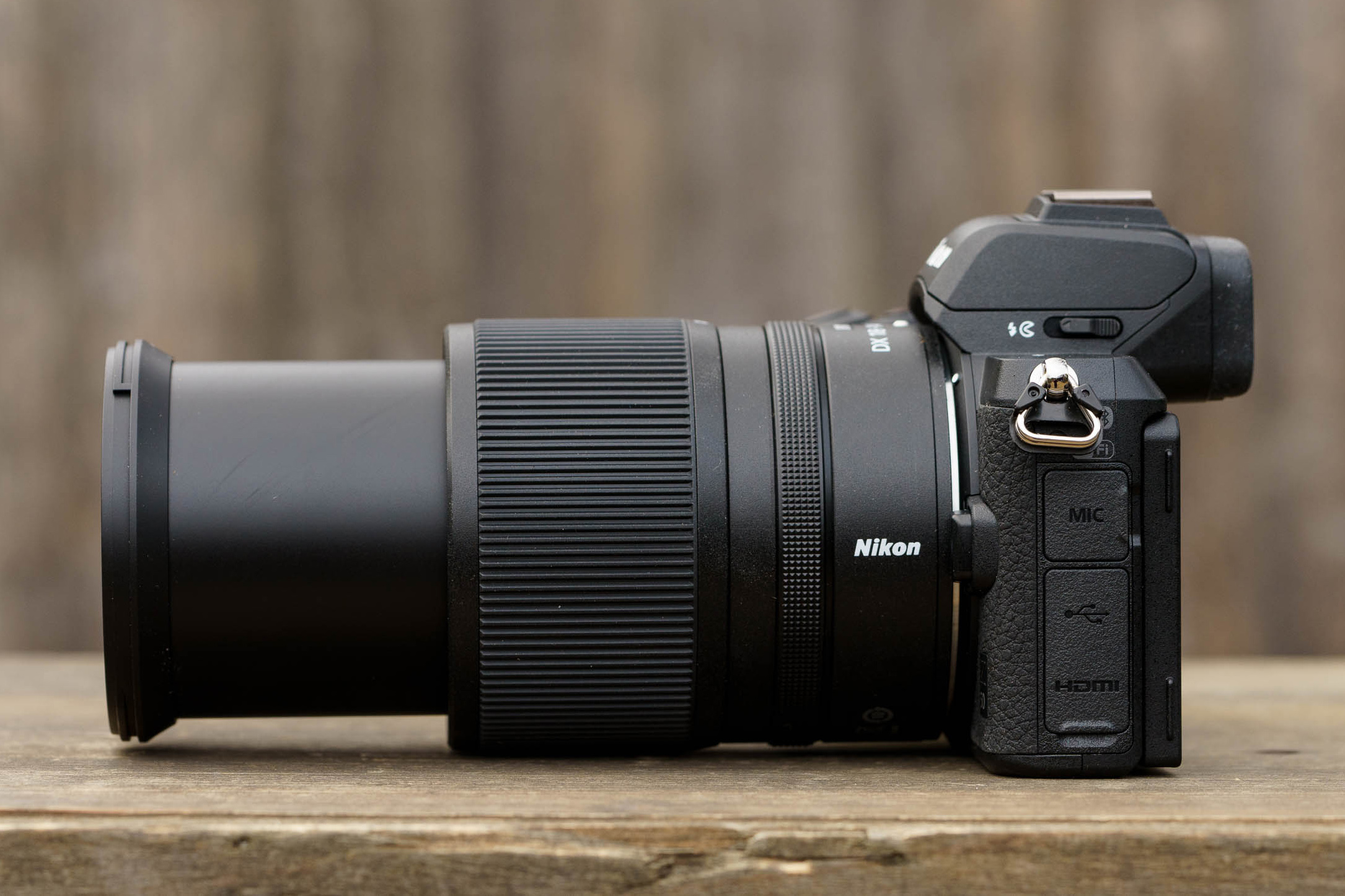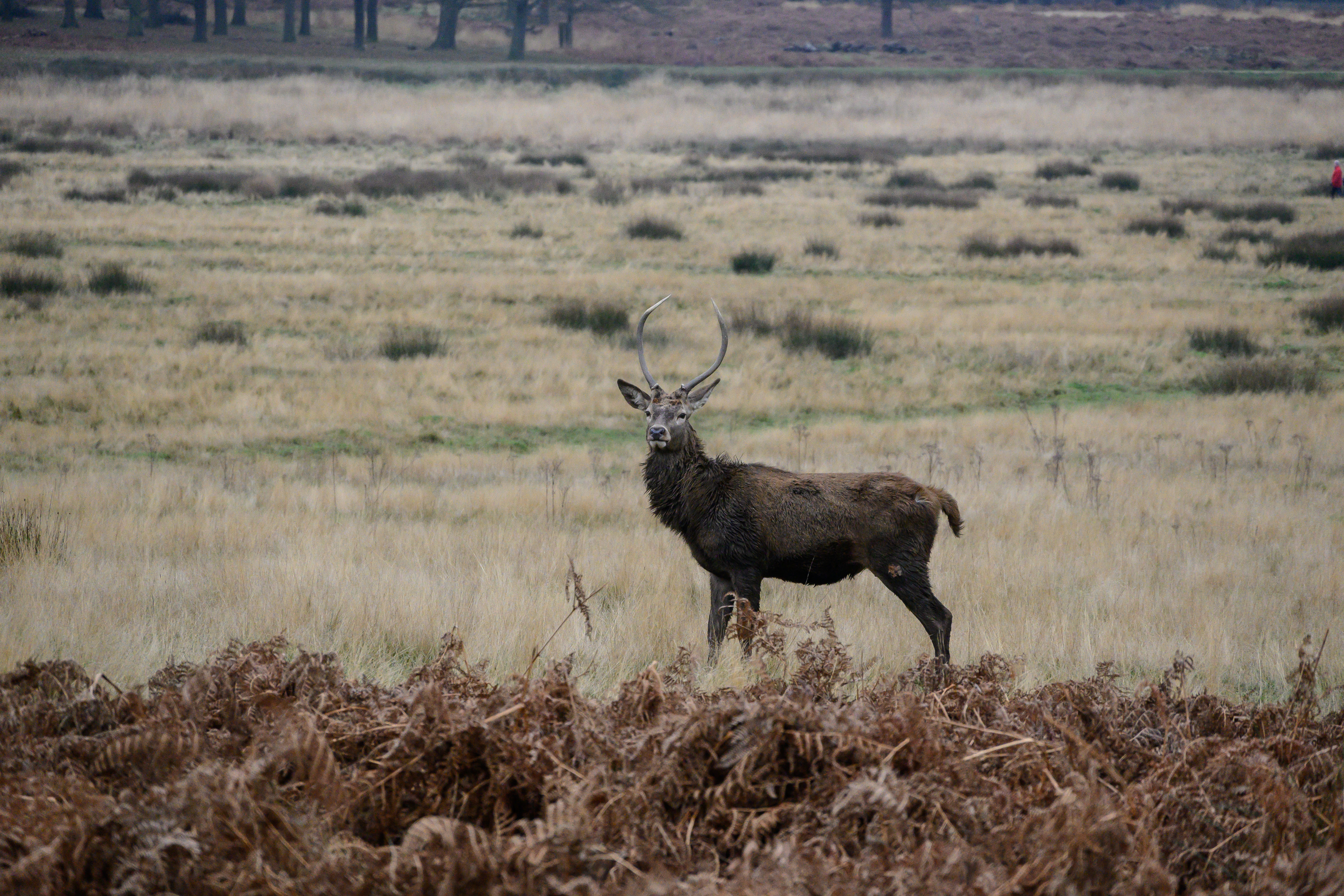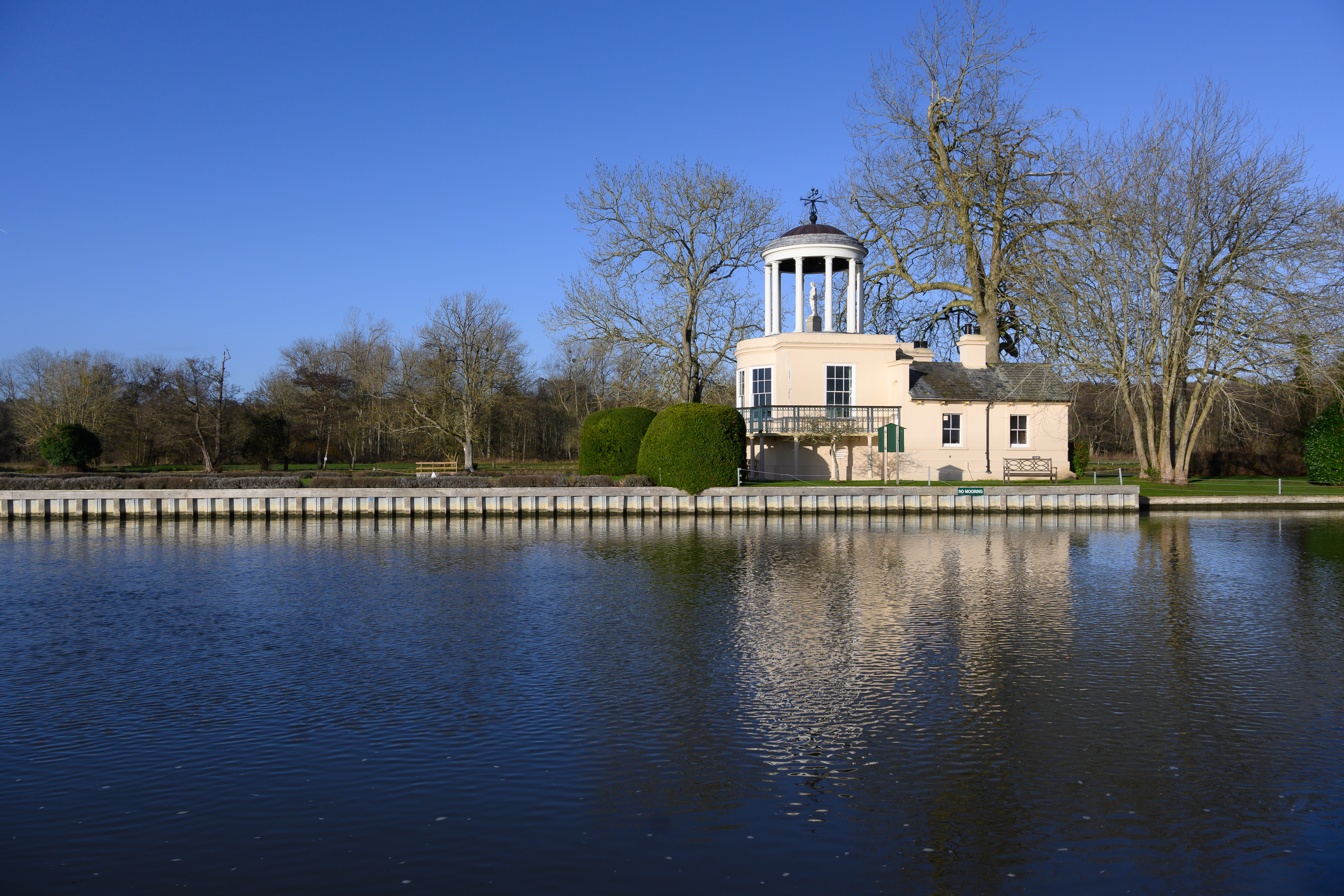Although Nikon has been building its Z mount lens range at a decent pace, the number of lenses specifically designed for use on its APS-C format Z 50 and Z fc cameras is still very limited. In fact, the Nikkor Z DX 18-140mm f/3.5-6.3 VR is only the third DX lens in the system, joining the DX 16-50mm f/3.5-6.3 VR and DX 50-250mm f/4.5-6.3 VR. That makes it a significant addition and with a focal length range equivalent to a 27-210mm on a full-frame camera, it’s an attractively versatile optic that should appeal for travel and everyday photography. Let’s see what it can do.
Nikkor Z DX 18-140mm f/3.5-6.3 VR Features
Inside the 18-140mm’s plastic barrel there are 17 elements arranged in 13 groups with two ED (Extra-low Dispersion) and two aspherical elements. The ED elements are designed to correct chromatic aberrations while the aspherical elements correct distortions and help to keep the size and weight of the lens down.
Nikon hasn’t applied any special coatings to any of the lens elements, but it is weather sealed. However, there isn’t a gasket around the mount which means that although it should be fine in a light shower, it’s advisable to be cautious in heavy rain. As often seems to be the case, there are 7 blades in the diaphragm that creates the aperture.
Nikon has given the lens a stepping motor to handle the focusing. Its operation is entirely internal so that the front element doesn’t rotate during focusing, which is good news if you’re using a graduated or polarising filter as they won’t move position relative to the horizon or sun. On the subject of filters, the 18-140mm accepts 62mm filters, the same as the DX 50-250mm f/4.5-6.3 VR.
The ‘VR’ in the lens moniker indicates that the lens is optically stabilised. This is important, as unlike Nikon’s full-frame models, its DX format mirrorless cameras don’t include in-body image stabilization. In this instance, the system employs voice coil motors and is claimed to enable up to 5 stops of shutter speed compensation.
Nikkor Z DX 18-140mm f/3.5-6.3 VR Build and handling
While we might prefer to see a metal mounting plate and barrel, using plastic for their construction helps to keep the weight down to a modest 315g. That low weight prevents it from feeling too front-heavy on Nikon’s small DX format cameras, adding to the lens’ appeal for travel. Also, at 90mm from the lens mount at the shortest point and 73mm in diameter, the doesn’t look out of place on these compact bodies.
Nikon has kept the design of the lens simple. Unlike the firm’s more expensive offerings, it doesn’t have customisable L-fn buttons, a small status screen or any switches, and there are only two control rings. As there are no switches on the barrel, the focus mode must be set via the camera and the stabilisation can only be turned on and off via the camera’s menu.
The broader of the two rings is the zoom ring, which is towards the front of the lens while the narrower focus ring is nearer to the camera. This slim ring can be customised to adjust the aperture, ISO sensitivity, exposure compensation or focus when the autofocus system is engaged. I tend to opt for exposure compensation.
When the camera is set to manual focus mode, the ring reverts to its traditional purpose – focusing. As usual, the focusing is by wire and there are no discernible end points to the movement. As soon as the ring is rotated in manual focus mode, a distance scale appears in the viewfinder or on the screen on the back of the camera to guide the direction of movement.
I tested the lens on the Nikon Z 50 camera, which doesn’t have an option to enlarge the image in the viewfinder automatically when the focus ring is rotated. However, there’s a magnify touch button on the screen that can be used to zoom in to give a clearer view of the details when you’re focusing. There’s also the option to use focus peaking.
Autofocus
When the Z DX 18-140mm f/3.5-6.3 VR is mounted on the Nikon Z 50, it focuses quickly and very quietly. I can hear a subtle jitter in Continuous AF (AF-C) mode as the lens adjusts the focus, but when the default video setting of Full-time AF (AF-F) mode is selected, the focusing is silent. Focus breathing is also controlled well so the framing stays the same when the focus distance changes.
Occasionally, it’s handy to be able to adjust the focus manually when the subject is closest to the nearest focusing point, but generally, I find that the lens and camera cope very well with whatever they’re pointed at.
Nikkor Z DX 18-140mm f/3.5-6.3 VR Image quality
While this isn’t one of Nikon’s pro-level S-series lenses, it still delivers a good level of sharpness throughout its focal length range and across the frame. However, the detail-softening impact of diffraction is visible at the smallest aperture settings, particularly at the longest end of the optic. The minimum available aperture at the telephoto end is f/40 but I would avoid using apertures smaller than f/22.
On the whole, the lens produces pleasant-looking images with smooth out of focus areas, but I spotted a few specular highlights that have a bright outline and a dot in the middle. They look a little unusual but not unattractive in my images.
Nikon applies a profile to raw and JPEG images to automatically correct distortion, chromatic aberration and vignetting, and they generally work very well. However, if you photograph a subject with lots of straight lines at the 18mm end of the lens, if you have a very critical eye, you may spot very slight barrel distortion. I also noticed some corner shading at the widest apertures, but it’s not objectionable.
In addition, I was able to find a few subtle instances of colour fringing along high-contrast edges, but nothing that’s especially troublesome. They can also be removed in a matter of moments using the Defringe tool in Adobe Camera Raw.
While Nikon’s full-frame Z-series cameras have in-body stabilisation, the APS-C format Z 50 and Z fc do not, which makes the VR in the Nikkor Z DX 18-140mm f/3.5-6.3 VR very important. As I mentioned earlier, Nikon claims a shutter speed compensation factor of 5EV. However, I was able to exceed this at the 140mm end of the lens, getting an 80% hit rate when shooting at a shutter speed of 1/4sec. Switching to a shutter speed of 1/8 sec gave me a hit rate of around 100%.
There’s no lens hood supplied in the box, but fortunately the lens isn’t overly troubled by flare or ghosting. However, if you’re planning on taking the 18-140mm on a sunny holiday, it might be worth investing in the optional HB-101 hood, which costs £35 and will also help protect the front element.
Nikkor Z DX 18-140mm f/3.5-6.3 VR Verdict
In summary, the Nikon Z DX 18-140mm f/3.5-6.3 VR performs well, keeping distortion, chromatic aberration and vignetting under control, while offering an excellent stabilisation system and capturing a good level of sharpness. However, I’d recommend avoiding the smallest aperture settings towards the telephoto end of the lens. At just 315g in weight, it’s also not a lens that you’ll regret carrying, although it would be nice to have the reassurance of a weatherproof seal around the lens mount.
Nikon also offers the Z DX 16-50mm f/3.5-6.3 VR and Z DX 50-250mm f/4.5-6.3 VR for its APS-C (DX) format mirrorless cameras. Together, they cover the equivalent of 24-375mm on a full-frame camera, so if you already own both, this lens’s 18-140mm range is already covered. However, if you only want to carry one lens, the 50mm maximum reach of the 16-50mm lens is a bit too short for picking out details while on the 50-200mm, the 50mm start point is too long for most landscape scenes. Consequently, the 18-140mm is the most versatile of the three for travel and everyday photography. It’s not as delightfully compact as the 16-50mm with its retractable barrel design, and there were times when I missed that lens’s extra width. But overall, the Z DX 18-140mm f/3.5-6.3 VR makes the best choice when you don’t know exactly what you’re going to encounter.



